By John Kemp, Senior Energy Analyst, Reuters
U.S. electricity generators consumed a record amount of gas in the first four months of the year as prices slumped to the lowest level in real terms for more than half a century. Ultra-low prices encouraged more power production from some of the least-efficient single-cycle gas and steam turbines at the expense of coal.
But record combustion by generators made little impact on swollen gas inventories amid continued growth in gas production and sluggish exports.
Generators produced a record 1,334 billion kilowatt-hours (kWh) between January and April, according to the latest data from the U.S. Energy Information Administration.
Generation was up by 47 billion kWh (4%) compared with the same period a year earlier and by about the same compared with the prior 10-year average.
Two-thirds of the extra output came from gas-fired units (30 billion kWh) with most of the rest from solar farms (13 billion kWh).
As a result, generators boosted their gas consumption by 213 billion cubic feet (6%) compared with a year earlier to a record 3,941 bcf.
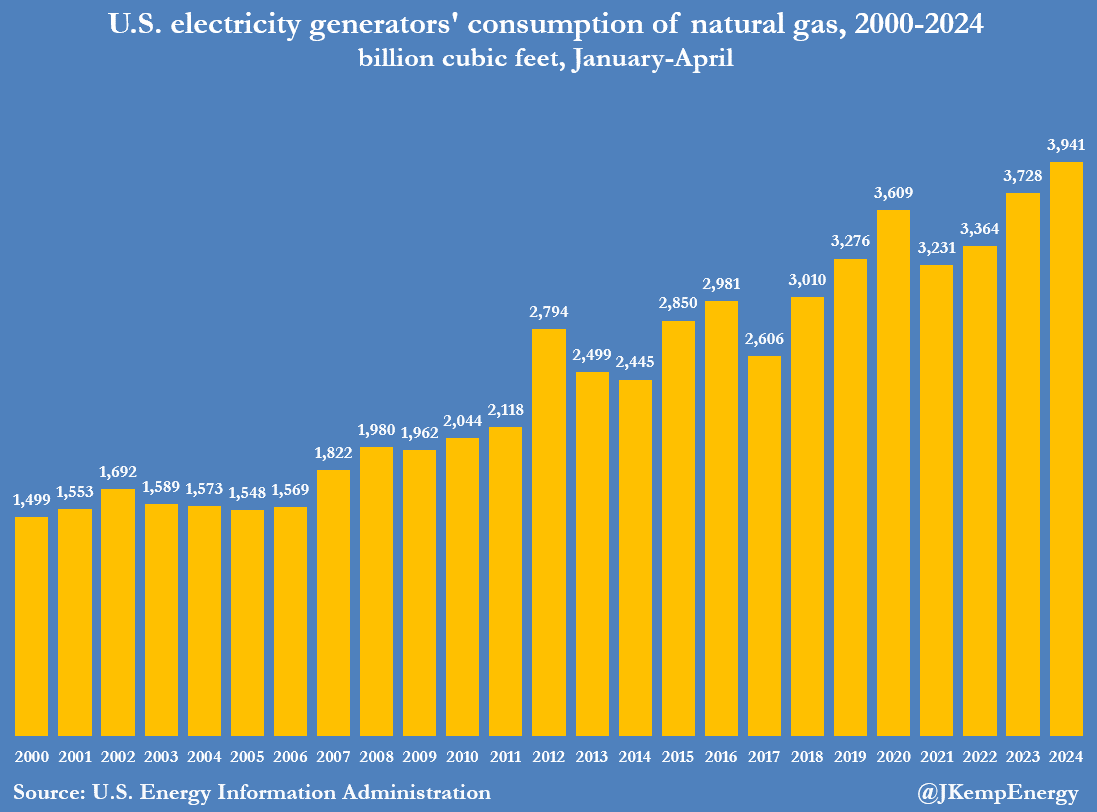
BLOATED STOCKS
Despite record power burn, gas stocks remained abnormally high, with inventories 671 bcf (+36% or +1.46 standard deviations) above the prior 10-year seasonal average at the end of April.
The surplus had swelled from 261 bcf (+14% or +0.58 standard deviations) a year previously thanks to a mild winter in 2023/24.
By April, the actual cost of gas received by electricity generators had slumped to an average of just $2.05 per million British thermal units.
After adjusting for inflation, power generators' gas acquisition costs had fallen to the lowest level on record in data going back to 1973.
MAXIMIZING RUNS
Exceptionally cheap fuel encouraged gas-fired generators to run their units for more hours, including the least-efficient, most fuel-hungry plants that normally operate mostly during the summer and winter peak periods.
Single-cycle gas turbines and gas-fuelled steam generators are much less efficient than combined-cycle units and usually operate only in peak periods of electricity demand.
With fuel so cheap, however, gas turbines operated with a record seasonal capacity factor of more than 14% in April 2024 up from 12% in April 2023 and 10% in April 2022.
Gas-fired steam turbines generated more than 15% of their maximum theoretical output, up from 13% in 2023 and 10% in 2022, and the highest for more than a decade.
PERSISTENT SURPLUS
Record gas-fired generation has helped prevent surplus inventories swelling even further but has not yet reduced bloated stocks to more normal levels.
Recurrent problems with the operation of the Freeport LNG export terminal have also delayed the normalisation of stocks.
Gas generation spiked to an all-time record early in July 2024, owing to high temperatures across much of the Lower 48 states, slow wind speeds, and the impact of low gas prices themselves.
Even so, inventories were still the second-highest on record for the time of year on July 19 and 479 bcf (+17% or +1.35 standard deviations) above the prior ten-year seasonal average.
After bouncing a little in May and June, futures prices have slumped in July towards the trough earlier this year, returning near to multi-decade lows in real terms.
Such extraordinarily low prices are sending the strongest possible signal to gas producers on the need to cut drilling and output even further after an initial round of cuts announced in February.
They are also sending a signal to generators to offer their units to the grid as much as possible, with gas generation records likely to be smashed this summer.
Prices will remain lower for longer until the inventories start to converge with the long-term seasonal average, most likely by the end of winter 2024/25.
https://www.zerohedge.com/markets/us-power-producers-binge-ultra-cheap-gas

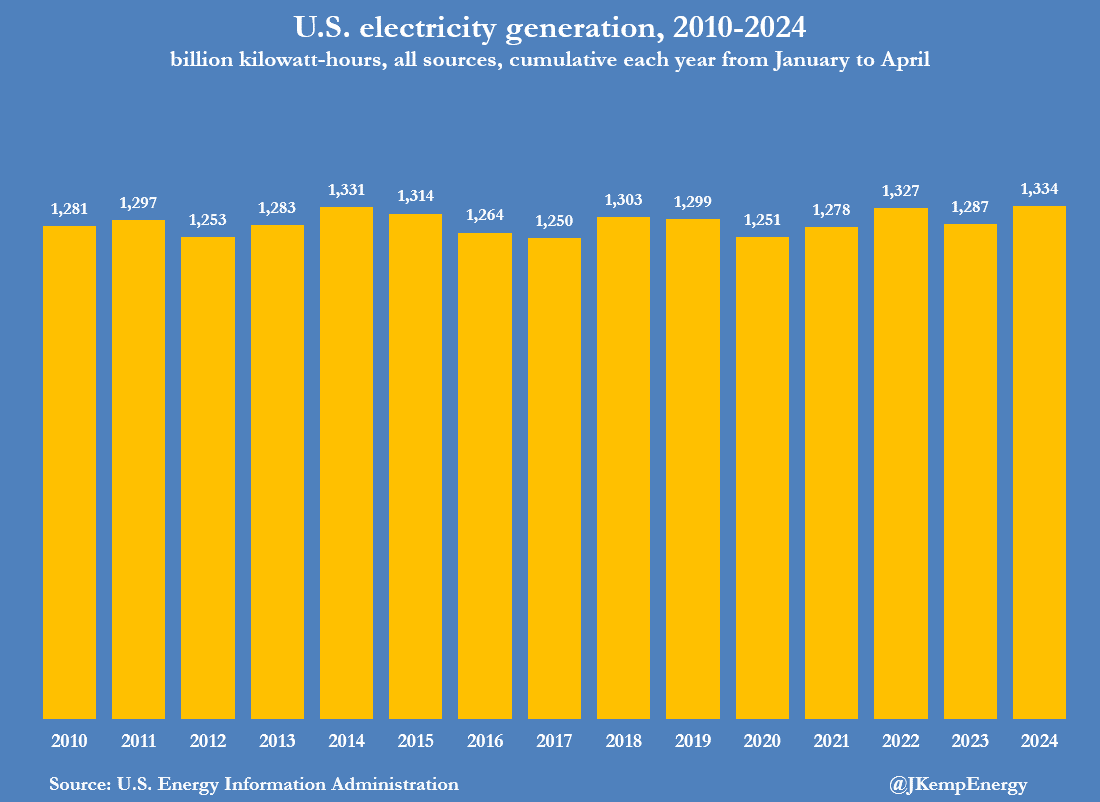
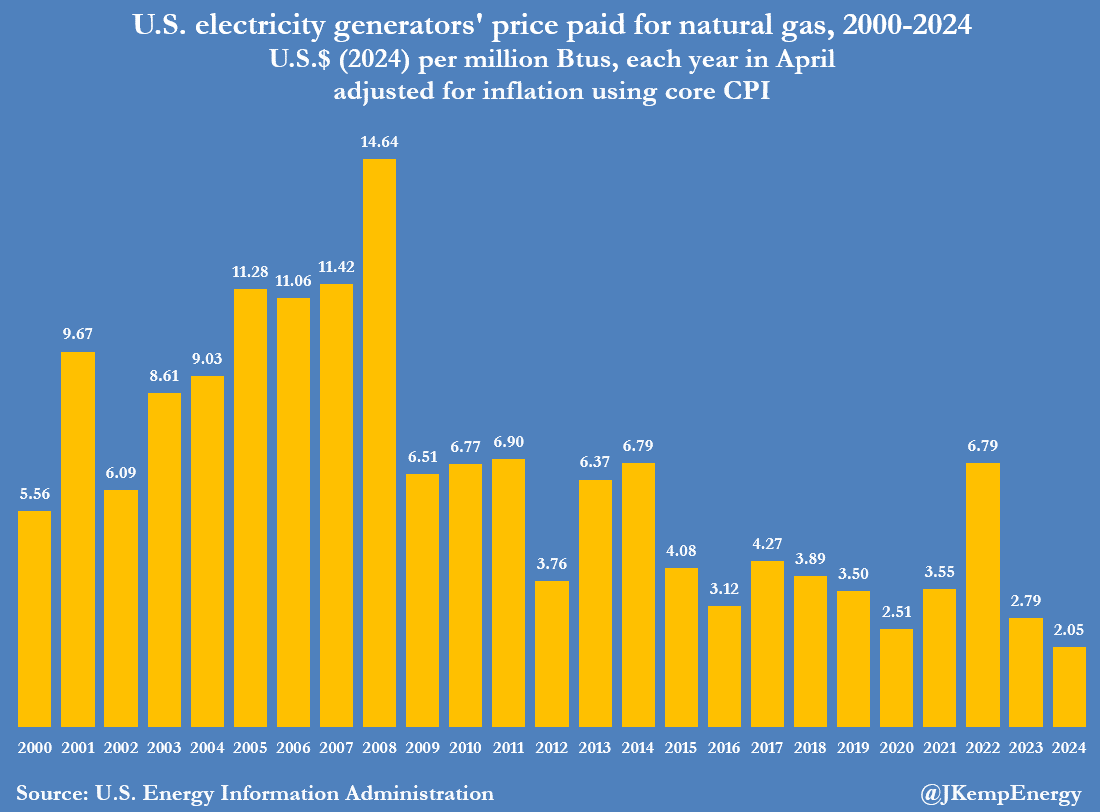
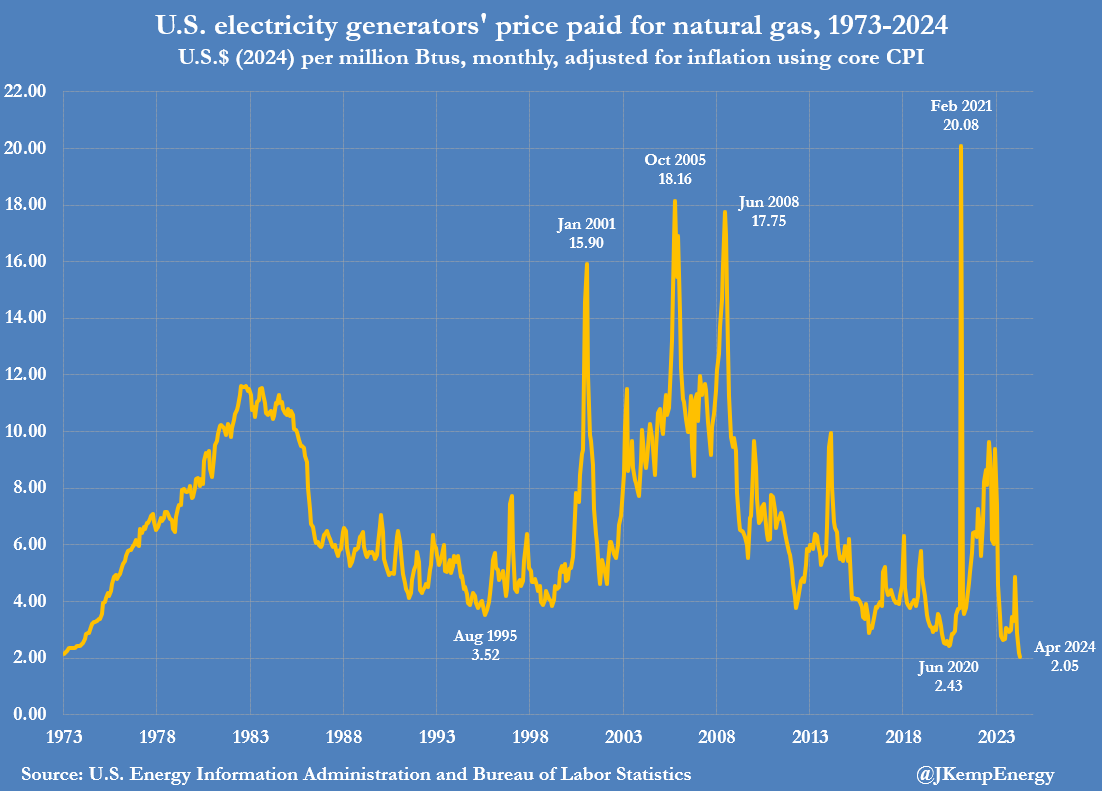
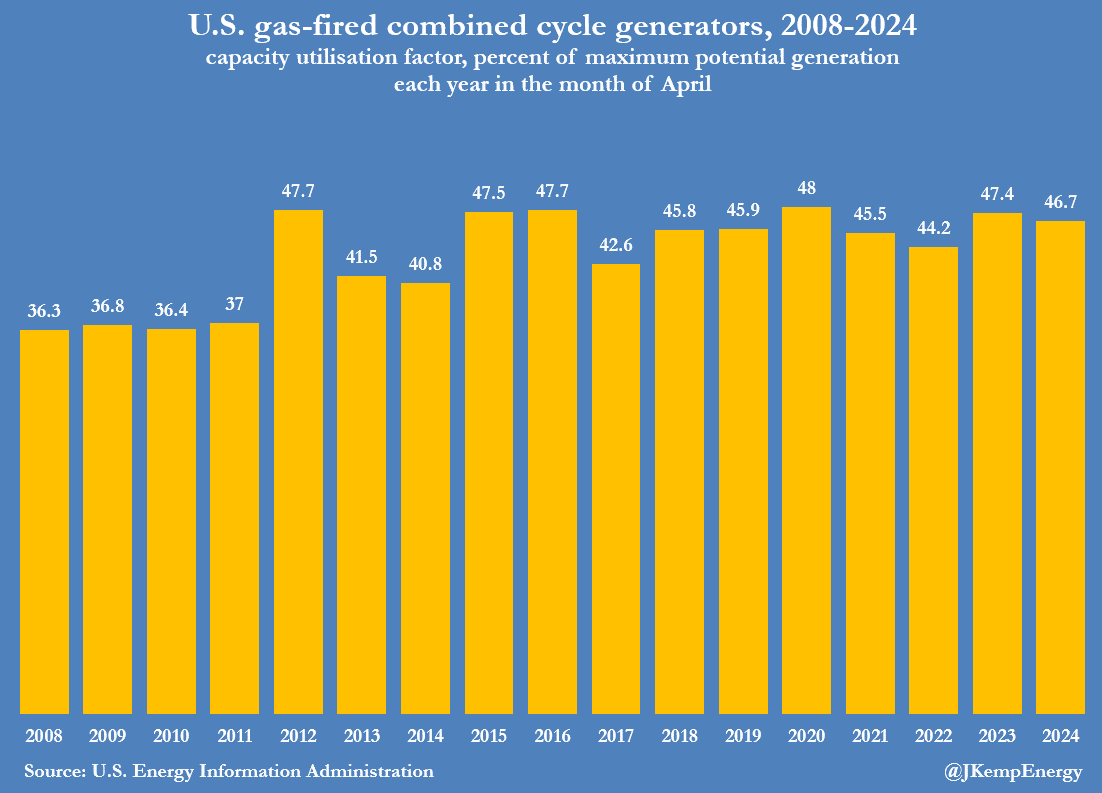
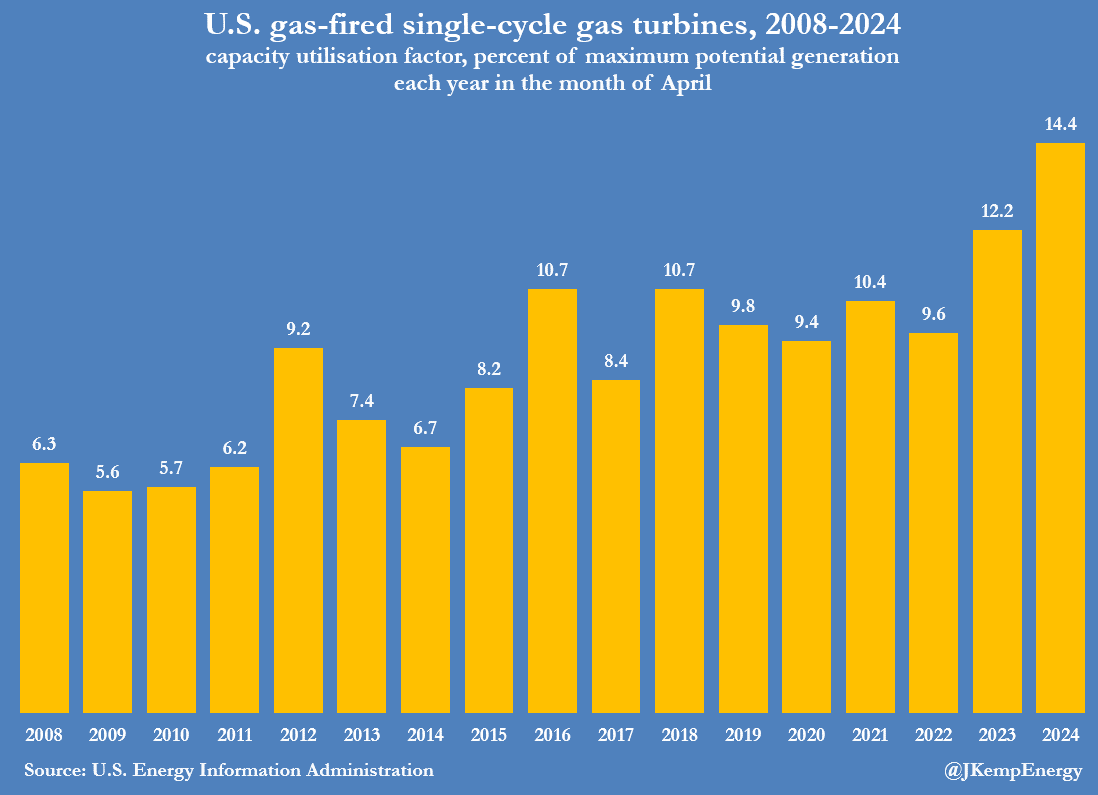
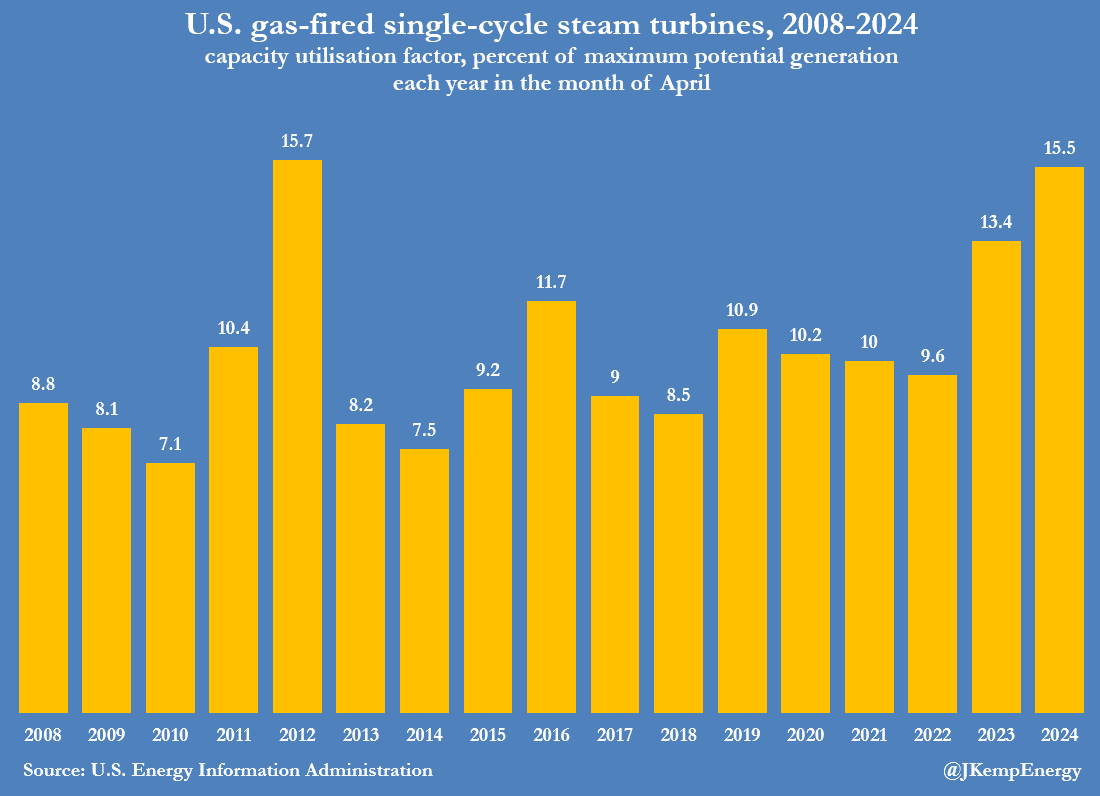

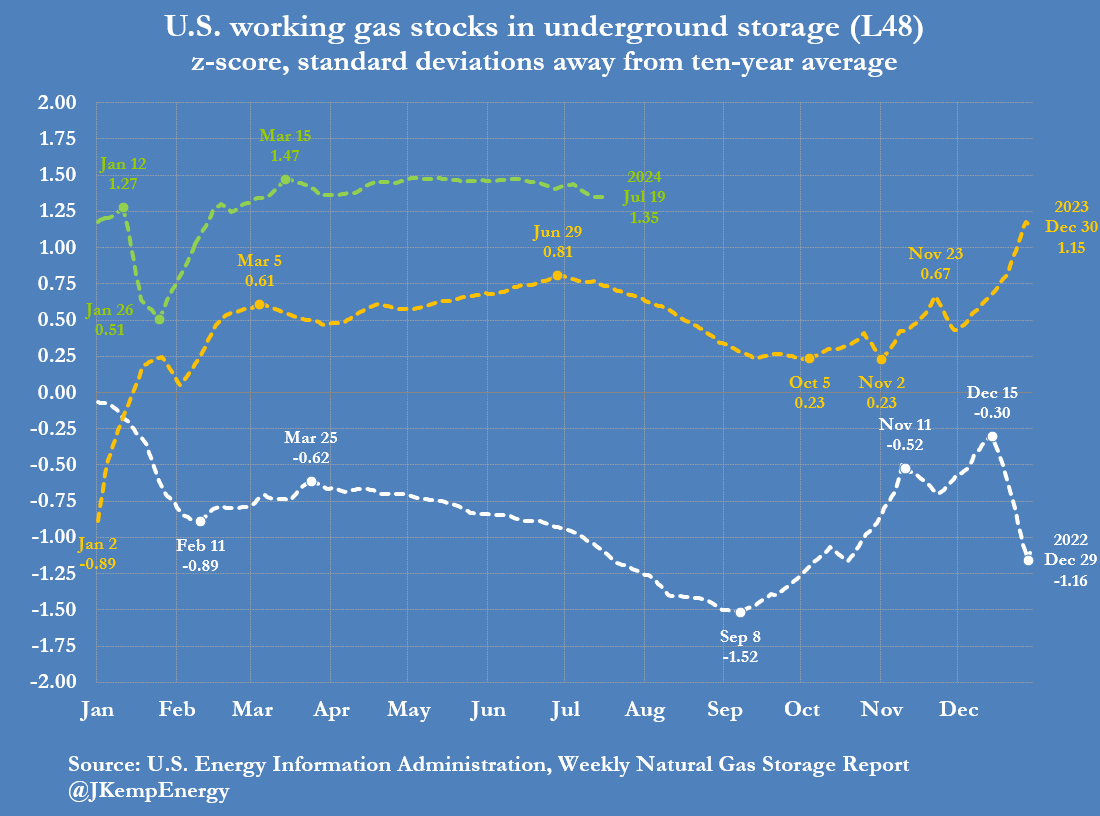
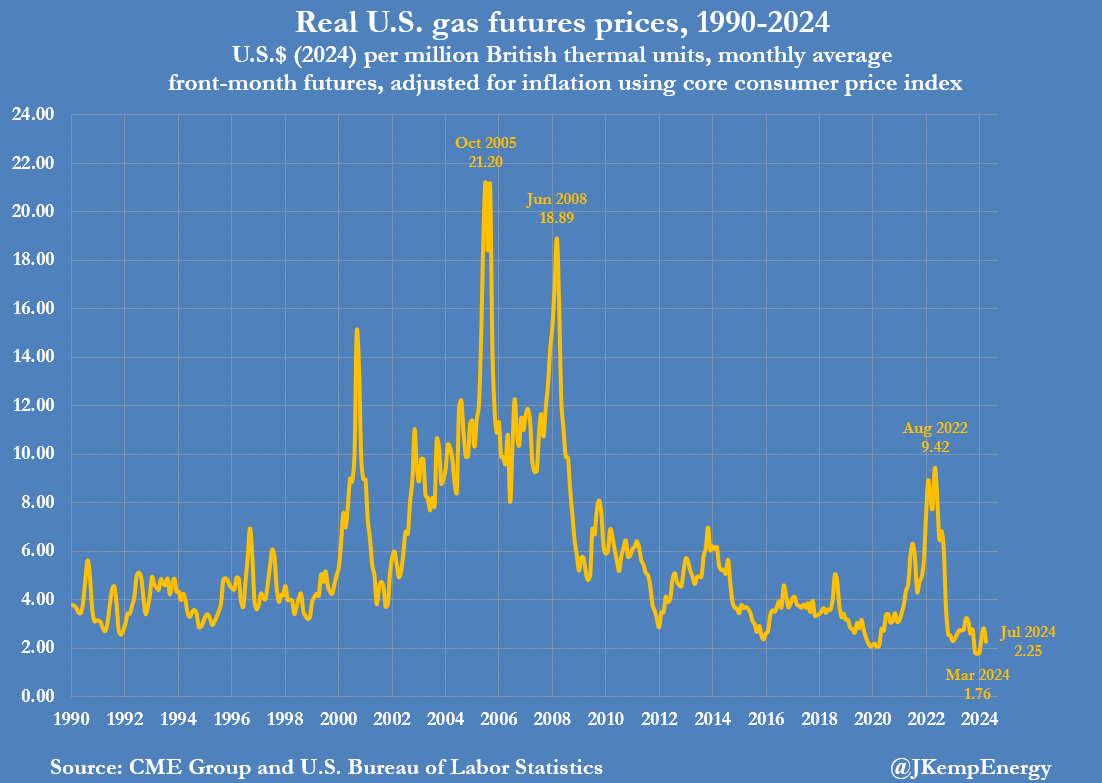
No comments:
Post a Comment
Note: Only a member of this blog may post a comment.